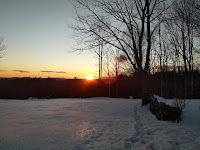Click here to read this mailing online.
Here are the latest updates for nurhasaan10@gmail.com "Free Technology for Teachers" - 3 new articles
The Future of Flickr's The CommonsFlickr's The Commons has been one of my go-to resources for historical imagery since I first wrote about it nearly fourteen years ago. That's why my heart sank a little bit when I visited The Commons earlier this week and saw a note that read "learn more about the future of Flickr Commons." Whenever I see notes like that on favorite websites that have been around for a long time, I expect bad news. Fortunately, this time there was good news. Flickr has made a commitment to reinvigorate and revitalize The Commons. The first step in that process appears to be creating a new home for The Commons. That new home is at The Flickr Foundation found at Flickr.org. It's there that you can read the full plan for the future of The Commons. The plan is published as a series of Google Documents and a Google Slides presentation. The key takeaways for teachers and students who use The Commons are:
Applications for Education The bottomline is that Flickr's The Commons is a great resource for history teachers who want to find historical imagery to use in their lessons. It's also a great place for students to find historical imagery to use in research presentations. Over the next couple of years The Commons should improve to make it a better resource than ever before. How to Embed Google Sheets Into WebsitesEarlier this week a loyal reader named Judith sent me a question about embedding Google Sheets into websites. I was happy to answer her question and made this short video to explain how to include a Google Sheet in Google Sites and in Blogger. In the video I include instructions for resizing the spreadsheet when you embed it into blog posts and websites. This is important because if you use the default embed code provided by Google Sheets, the sheet will appear very small and nearly unusable when embedded into a blog post or web page. The change to the code is to simply add width and height dimensions to the end of the code provided by Google Sheets. Watch this video to see how to embed Google Sheets into a website and adjust the size of the display of the sheet. Applications for Education Embedding a Google Sheet into a website can be a good way to share collected and organized data from surveys conducted via Google Forms. Five Short Lessons About the Start of WinterEven though it has been cold and snowy here in Maine for the last week or so, the start of winter is still eleven days away. The winter solstice is always welcomed as it does mean the shortest day of the year (in terms of amount of sunlight) will be behind us. If you're looking for some resources to help students understand the winter solstice, take a look at the resources I have listed below. What is a Solstice? is a National Geographic video. The two minute video explains why we experience solstices. The video also explains why the solstice and the first day of winter aren't always the same. PBS Kids Nature Cat has a cute video that explains the basic concept of winter and summer solstice. Last year TIME published a video featuring "four things you probably didn't know about the winter solstice." Spoiler alert! You probably knew them, but the video will remind you about those things. Mechanism Of The Seasons is a six minute video about why the length of daylight we receive in a location changes throughout the year. This video could be helpful in a flipped classroom environment. Autumn Stars and Planets is a short PBS video that explains why the stars and planets that we see from Earth change with the seasons. The video is embedded below. More Recent Articles |
Email subscriptions powered by FeedBlitz, LLC • 1800 Camden Road, Suite 107-258 • Charlotte, NC 28203, USA
« Prev Post
Next Post »









ConversionConversion EmoticonEmoticon